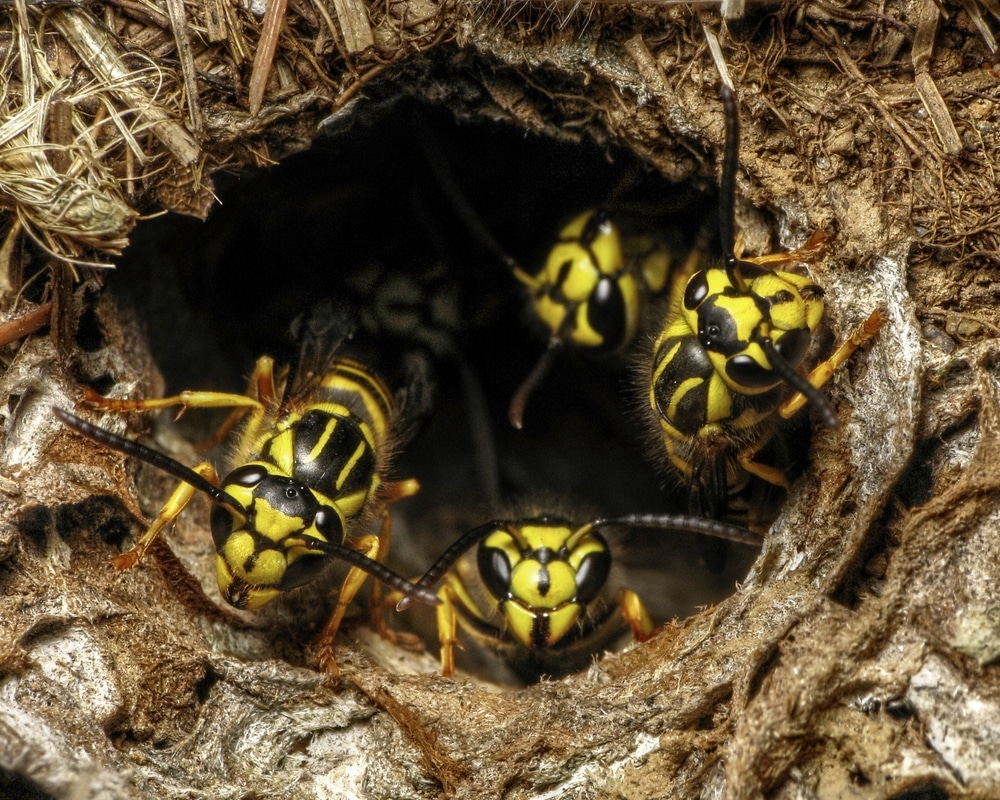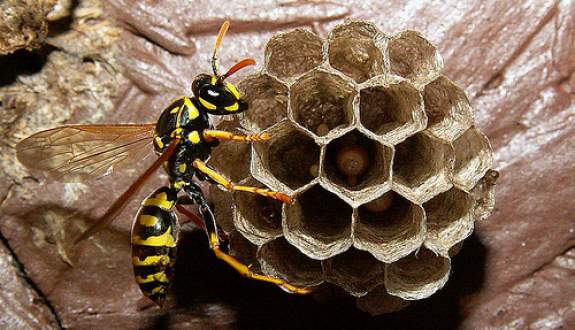Yellow jackets are some of the most aggressive stinging insects you’ll encounter. Unlike bees, they can sting multiple times and don’t hesitate to defend their nests fiercely. If you spot a yellow jacket nest near your home, ignoring it won’t make it go away. In fact, the longer it stays, the bigger the risk of stings and damage.
Here’s what you need to know about yellow jackets, how to spot a yellow jacket nest, and what steps to take to handle the problem safely.

Why Yellow Jackets Are a Problem
Yellow jackets are more than just a nuisance. They can be dangerous, especially for people who are allergic to their stings. Their aggressive nature means they defend their nests loudly and fiercely. Even those without allergies can suffer painful stings that cause swelling and discomfort.
Yellow jackets also become more active in late summer and early fall, when their colonies reach full size. At this time, they search for sugary foods and protein, often invading picnics, trash cans, and outdoor dining areas. Their presence can quickly ruin outdoor activities and create safety hazards around your home.
How to Identify a Yellow Jacket Nest
Knowing what to look for helps you spot yellow jacket nests early before they grow large and more dangerous. Yellow jacket nests vary in location and appearance:
- Above ground: Nests can hang from tree branches, eaves, or porch ceilings. These look like gray, papery balls with a honeycomb pattern inside.
- Underground: Many yellow jackets build nests in old rodent burrows, holes in the soil, or under decks and patios. You might notice increased yellow jacket activity near a hole in the ground.
- Wall voids or attics: Sometimes nests form inside walls or attics, where you hear buzzing or see yellow jackets entering and exiting small openings.
If you see a lot of yellow jackets flying in and out of a specific spot, that’s a good sign a nest is nearby.
Why You Shouldn’t Try to Remove the Nest Yourself
Yellow jackets are protective of their nests. Disturbing them can trigger aggressive swarming and multiple stings. DIY removal attempts often fail or make the problem worse. Without proper equipment and knowledge, you risk serious injury.
Also, yellow jacket nests can be hidden in hard-to-reach places. Trying to get to them without the right tools can be dangerous. Professional removal is safer and more effective. Experts know how to approach nests, use the right treatments, and prevent the yellow jackets from returning.
What You Can Do Before Help Arrives
While waiting for professional help, there are a few things you can do to reduce risk and avoid attracting more yellow jackets:
- Avoid wearing bright colors or floral patterns outdoors, which attract yellow jackets.
- Don’t use scented lotions, perfumes, or hair products when spending time outside.
- Keep food and drinks covered, especially sweet or protein-rich items.
- Secure trash cans with tight-fitting lids and clean up spills or crumbs promptly.
- Keep pets away from yellow jacket activity areas.
These steps won’t remove the nest but can reduce the chance of stings and keep yellow jackets from being drawn closer.
Professional Yellow Jacket Nest Removal
When you hire a professional for wasp removal, they start with a thorough inspection to locate the nest and assess its size and location. Then, they use targeted treatments designed to eliminate the colony safely and quickly.
Professionals wear protective gear and use tools that allow them to apply treatments with minimal disturbance. They also follow up to confirm the nest is fully removed and the yellow jackets don’t come back.
This approach reduces risk to you and your family and provides peace of mind that the problem is handled completely.
When to Call for Help Immediately
If you or someone nearby is allergic to stings, or if you notice a large nest close to high-traffic areas like playgrounds or patios, call a professional. Don’t wait. Even a single sting is dangerous, and with yellow jackets, you’re talking about dozens, if not potentially hundreds of stings that are worse than bee stings.
Even if you aren’t allergic, getting stung by so many yellow jackets can cause serious health issues, and quick action can prevent accidents.
Also, if you see yellow jackets swarming aggressively, or if the nest is in a difficult-to-reach spot, don’t try to handle it yourself. Professionals have the training and equipment to manage these situations safely.
Final Thoughts
Yellow jackets won’t just leave on their own. They defend their nests and grow their colonies over time. Ignoring a nest puts you and your family at risk of painful stings and possible allergic reactions.
Taking quick, safe action to identify and remove yellow jacket nests is the best way to protect your home. Use prevention strategies to keep them from returning, and don’t hesitate to call pest experts when the situation calls for it.

